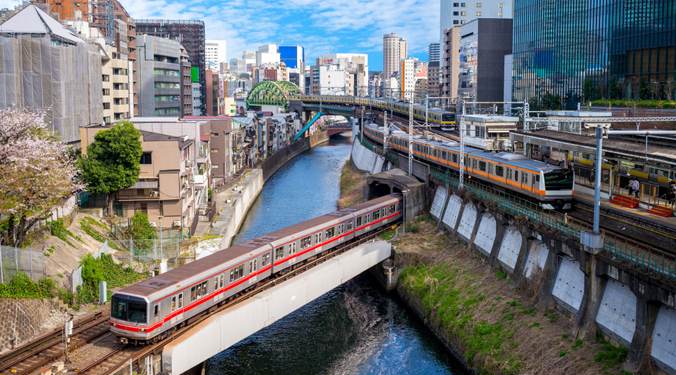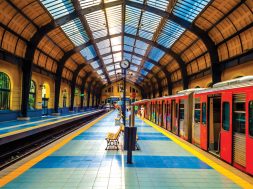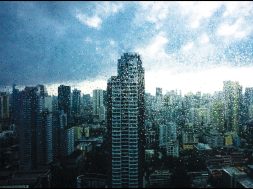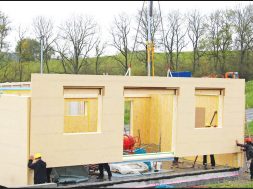Metros and Railways: Rising up to the challenges of rapid urbanism

Transportation and logistics are the key challenges of urbanisation which is in an expansionist mode, metros and railways are the ideal tools to address this upsurge.
As the rate of urbanisation in India increases and newer towns and cities come up, transportation and logistics will require attention.People will need efficient methods to commute from one destination to another. World over MRTS(Mass Rapid Transit Systems) and railways have consistently addressed this issue and India too is not an exception. It is for this very reason the GoI has given a lot of impetus to the construction of MRT and new railway corridors.
The design and the placement of metro station and railway stations is essential because apart from facilitating movement of people MRTS and railways is also essential for growth of newer cities. Nishant Prakhar, Senior Architect GPM Associates, says, “When it comes to railway design, we are not just designing the station for commuters and passengers, we are also developing some real estate and built up areas, hence, in a way we are inviting more people to come within the station complex. That is an additional load in terms of traffic movement and passenger movement.”
Kumar Keshav, Managing Director, Uttar Pradesh Metro Rail Corporation Ltd holds a similar opinion, he adds “With the construction of the metro, the cost of property/land along the corridor increases manifolds due to improved connectivity. National Transit Oriented Development (TOD) Policy provides guidelines on development along transit corridors. TOD integrates land use and transport planning and aims to develop planned sustainable urban growth centres, having walkable and liveable communes with high density mixed land-use. Citizens have access to open green and public spaces and at the same time transit facilities are efficiently utilised.”
People’s flow is another concern in metro and railway stations and design has a big role to play, to address this challenge. Prasenjit Biswas, General Manager, Landside Planning, Bangalore International Airport Limited adds, “On the design side the current challenges are correctly sizing the stations for optimum utilisation – most stations are either over utilised or underutilised. However, this is not just related to the station design but also through where the alignment is planned and how we are adapting to the existing or proposed land use of an area to support the station loading.”
Metros and Railways are also expected to offer last mile connectivity “Coming to understand our ground reality in different cities, access to metro stations, facilities around the station and last mile reach is still a key concern which also affects its ridership says Shubhashweti Sinha, Principal Architect, Urbancolab “Some cities already have a TOD policy in place however Delhi has made TOD norms and regulations part of Master plan 2041 as well as has some institutional bodies in place to monitor the process. Many cities are still planning and building their metro systems and this gives an immense opportunity to build with far better standards that enables human scale built density that works within the Indian context. Cities like Tokyo have for example successfully managed to control and restrict development close to transit stations with land use policies & at the same time operate private railway companies with additional revenue mechanisms such as retail and commercial offices owned around station areas.”
Having said that each station design has some specific or unique criteria to be addressed Priya Shyam Parmeswaran, Director, Design Sync Consulting & Advisory Pvt Ltd. says “Every station has different dynamics. In a system like Mumbai Railway, it is designed in such a way that people don’t linger around. That’s one of our design criterias, we want people to exit the system as quickly as possible because, in Mumbai it is a security hazard. On the other hand, in a city like Nagpur, you want to create a system that is attractive and inviting because in and around the station there is nothing of the sort.”
Especially in cities where there is a dearth of space, exploring too many overhead metros may be an unwanted distraction Charanjit Singh Shah. Founding Principal, Creative Group adds “While metro rail systems have come to define cities’ growth and development, they also present a number of difficulties that the city and its citizens must address in order to achieve a more holistic benefit. For example, the city’s skyline and urban form are distorted by a vast network of concrete viaducts. This can be remedied by taking the metro underground, but at a substantially higher per-kilometre cost. It is not always advisable to create grand and massive structures. The real challenge is to make the building a rhythmic addition to the surrounding.”
46
Cookie Consent
We use cookies to personalize your experience. By continuing to visit this website you agree to our Terms & Conditions, Privacy Policy and Cookie Policy.









